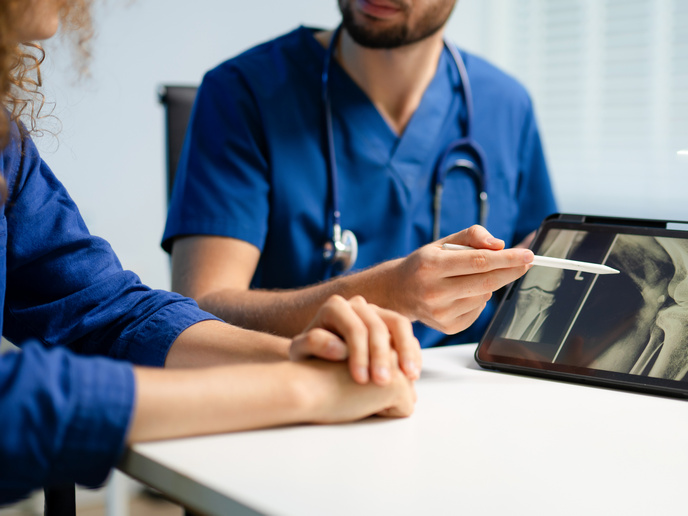Bone graft substitute by injection
A variety of bone graft substitutes are available for dentistry, maxillofacial surgery and orthopaedics. However, those that can be applied with a syringe and shaped in situ require large forces that can inhibit accurate placement and appropriate quantity. Further, tissue response to the foreign materials is inconsistent, particularly in older or compromised patients. The EU project IMCOSS(opens in new window) (Injectable medical ceramics for bone repair and augmentation) has developed the knowledge base required to improve both the delivery device and the materials delivered. The scientists studied nanostructured biomaterials to optimise rheology, tissue biocompatibility and bone tissue regeneration. Extensive characterisation demonstrated that the basic material – nanoparticles of hydroxyapatite (nHA) – under development becomes less viscous with applied stress (it is thixotropic). Optimisation with the addition of metal ions produced an advanced paste with the fluidity necessary for successful application with a syringe. IMCOSS scientists used 3D in vitro cell culture models for testing biocompatibility. Using MG63 cell lines and mesenchymal stem cells showed reduced toxicity compared with the 2D tests using more mature bone cells. Evaluation of the optimised and advanced pastes showed improved biocompatibility and most significantly the metal-ion doped nHA stimulated an increase in cellular activity. This demonstrates the enhanced potential of the advanced pastes for bone repair. In vivo tests showed healing of the defect in only six months with no obvious inflammation. Optimal concentration of nHA was achieved in the basic paste. The team has developed a preliminary version of the delivery device that was tested during a clinical workshop by dental and orthopaedic surgeons. Focused feedback together with consideration of regulatory constraints has provided the complete optimisation of both material and delivery device along with increased dosage flexibility and precision delivery. Within two to three years of obtaining requisite approvals, products' marketing is expected to increase annual turnover of the partner SMEs by up to 200 %. Sales will initially target hospitals and surgeons, whose use and generated clinical data will foster more widespread uptake. IMCOSS technology will obviously benefit patients, enhance the competitiveness of the EU medical device industry and increase the visibility of participating research institutes.







